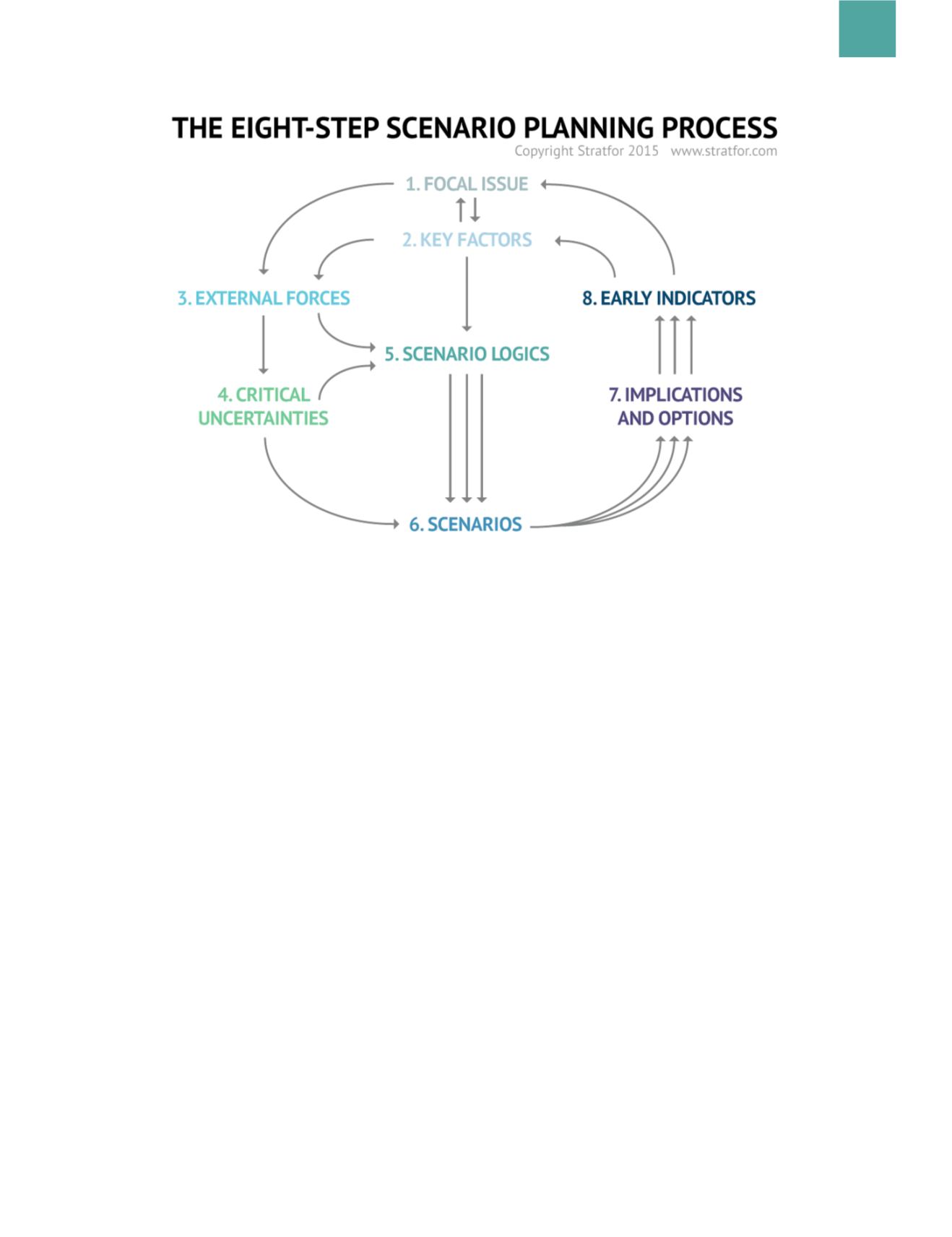
www.
nchra
.org
15
Scenario Planning
STEP 3: EXTERNAL FORCES
After identifying key factors, it’s time to consider
the more remote forces operating in the larger
world, e.g., geopolitical, economic, social and
technological forces that are often left out of the
usual business plan.
Strategic plans that disregard such forces — war
is an obvious example — often fail. The kind of
geopolitical analysis that Stratfor offers can play
a major role here. But a good set of scenarios will
also offer insight into less obvious dynamics such
as migration patterns, cultural differences, new
technologies, currency fluctuations, environmental
issues, and/or epidemics.
In addition to potential risks, it’s essential to look
on the upside. Opportunities, breakthroughs and
new technologies are difficult to anticipate. But
it’s important to exercise imagination in disciplined
ways that do more than gaze at the world through
rose-tinted glasses. Human ingenuity should not be
discounted, however difficult it may be to anticipate.
As with key factors, there is no proof for having
thought of all possible external forces. This work
calls for imagination and creativity. Once a scenario
team has generated a list of 70 to 80 key factors
and external forces, the effort to come up with still
more will get harder. All of the obvious factors and
forces will have been mentioned. It is necessary
to push imaginative thinking to the limit, but not
too far beyond the limit. Some outlandish ideas
are welcomed, but when people start talking
about green men from Mars, you know it’s time to
move on.
STEP 4: CRITICAL
UNCERTAINTIES
By following a methodical, step-by-step process,
the scenario team can achieve a balance between
the kind of wild creativity and free-form imagination
called for during the brainstorming in steps two and
three and good judgment based on knowledge and
experience. Where steps two and three featured a
divergent process in which the team tries to think of
everything that could affect the focal issue, step four
calls for a convergent process of prioritization.
The criteria to be used in allocating priority votes
are importance to the focal issue and degree of
uncertainty. When all the votes are counted and
closely related items clustered together, there will
be a short list of critical uncertainties. For example,
will energy prices rise or fall? Will consumer values
tip toward the more traditional or the more self-
expressive? Will a technology advance rapidly
or slowly? Will the government lean toward
deregulation or reregulation?
STEP 5: SCENARIO LOGICS
But how do we decide which futures are worth
developing as detailed scenarios? This is the
challenge of step five, how to narrow down from the
virtually infinite number of possible futures to settle
on just two to five that will lead to strategic insight.
After all the priority votes on critical uncertainties
have been counted, the group fixes on just two
critical uncertainties to serve as the axes of a 2-by-2
matrix. Four scenario logics are then generated from
the labels on the ends of the two axes.
This set of scenarios, developed for one of the Detroit
Three automakers way back in 1984, contained “the
official future” in the lower left quadrant: low-priced
fuel with neo-traditional consumer values. This was
the kind of future Detroit had been planning on for
many decades. But higher fuel prices and changing
consumer values required them to think of new
kinds of vehicles that would be appropriate for


